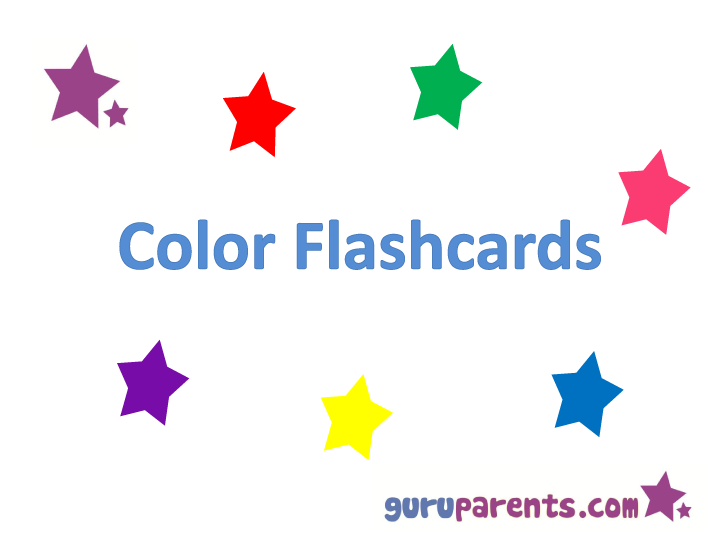These color flashcards are a neat way to introduce a number of key reading concepts to your child.
Learning colors (or colours, depending on where you’re from) is fun and simple. Indeed, it is so easy that most kids will learn the names of the colors without you needing to teach them.
So you may ask is there any value in color flashcards then?
The answer is that there is value – and quite a lot actually.
Firstly, the more your child is exposed to the written word, the better – and the easier they will find learning to read.
Using the Colour Flashcards
You can further enhance the value of the flashcards by gently using the colors to illustrate the sounds that some letters make. For example, when going through the flashcards, emphasize the sound of the “p” at the start of pink and then again at the start of purple. Doing this will help start to embed in your child the association of the letter p with its sound.
Colors are useful words to know by sight – and are valuable additions to a child’s reading vocabulary. Especially for younger children, some words that we might think are simple, such as “the”, “his” or “of” can actually be quite conceptually difficult. But colors are nice and simple – so children won’t be in any uncertainty as to their meaning when learning to read them – and thus more likely to learn them easily.
Since colors are such simple concepts and because they are ever-present, reading material for young children frequently contains color references.
By spending some time with our color flashcards you will be making it much easier for your child to recognize these words in texts in the future.
Flashcards for Older Children
For older or advanced learners, the colors also offer an opportunity to introduce some of the simple pronunciation rules of the English language.
A good example of this is the double e sound heard in “green”. Some children struggle to learn this rule – and you will hear them sounding the double e as “eh, eh”. If the child already has learned the word “green” by sight then they are already familiar with the sound that double e makes – taking some of the mystery and complexity away for them.
There are several other special sounds to be found in the colors – for example, the “bl” blend in blue and black, and the “gr” blend in grey and green. And one of the most important English language rules can be found in “white”, that of the “bossy e” – when there is a vowel followed by a consonant and then an e, the vowel is pronounced differently – thus white is not pronounced the same as “wit”.
Ready to Use Color Flashcards?
Most importantly, have fun when using these flashcards. Don’t worry too much about focusing on the specific points outlined above as most of them will occur quite naturally. Instead, find ways to have fun – maybe after going through the flashcards you could sing the rainbow song.
And don’t forget to use real life to further instil the names of the colors in your young child’s mind – talk about yellow bananas and red tomatoes when shopping, point out the white and black cars on the road and the beautiful blue of the sky and the ocean.
Have fun!
Color Flashcards (pdf version)
Click here to download a free Powerpoint (ppt) version of Color Flashcards

